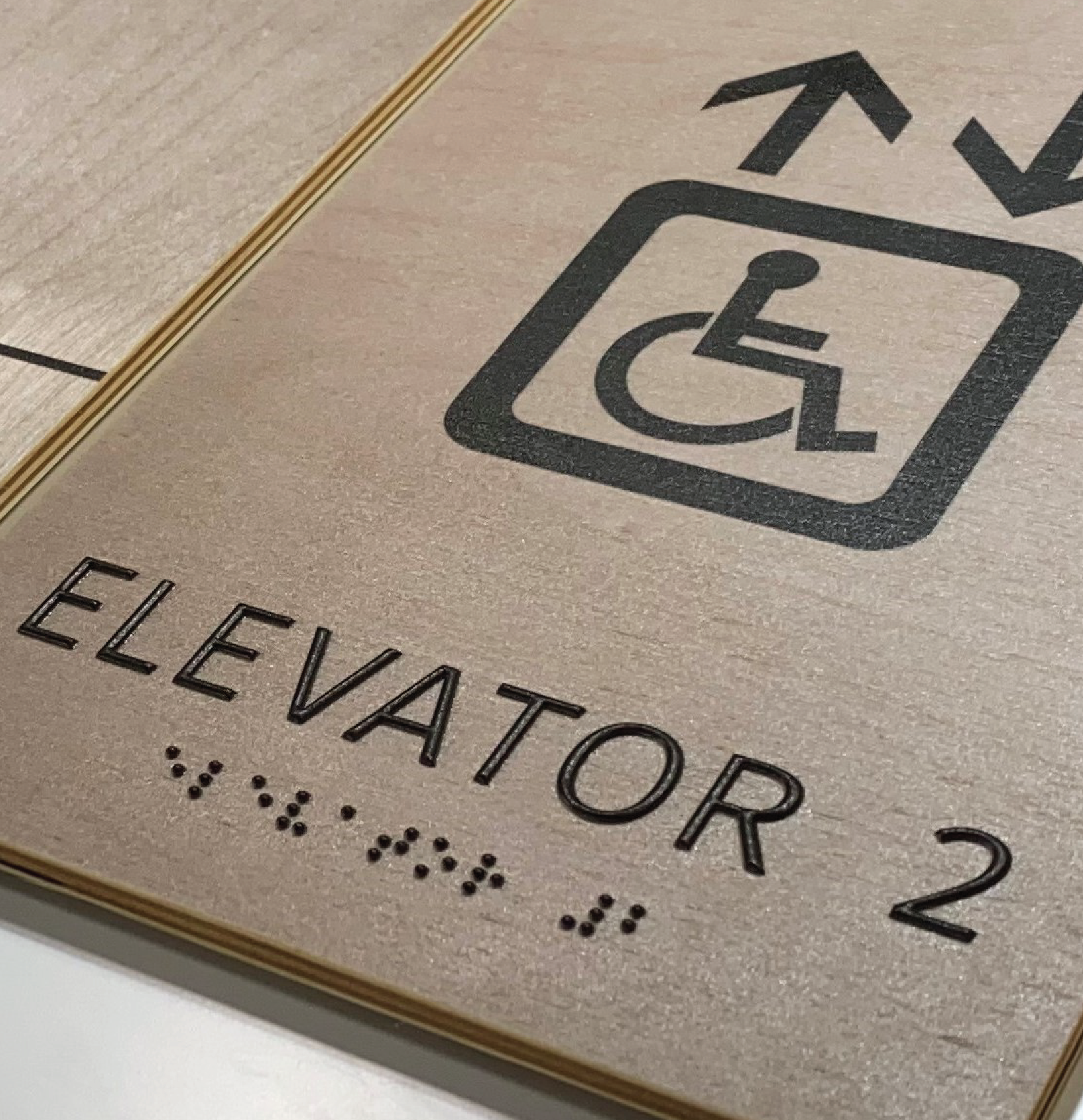A Comprehensive Guide to Selecting the Right ADA Signs
A Comprehensive Guide to Selecting the Right ADA Signs
Blog Article
Exploring the Key Attributes of ADA Indicators for Boosted Availability
In the world of availability, ADA indications work as quiet yet effective allies, making certain that areas are inclusive and navigable for people with disabilities. By integrating Braille and responsive components, these indicators break barriers for the aesthetically damaged, while high-contrast color design and legible typefaces deal with diverse aesthetic requirements. Their strategic positioning is not arbitrary yet instead a calculated initiative to help with smooth navigating. Beyond these features lies a much deeper story about the advancement of inclusivity and the ongoing dedication to creating fair areas. What extra could these indications signify in our quest of global availability?
Significance of ADA Conformity
Ensuring compliance with the Americans with Disabilities Act (ADA) is crucial for promoting inclusivity and equivalent access in public areas and offices. The ADA, enacted in 1990, mandates that all public facilities, companies, and transport solutions accommodate individuals with specials needs, guaranteeing they enjoy the exact same civil liberties and opportunities as others. Compliance with ADA standards not only meets lawful obligations but likewise enhances an organization's track record by showing its dedication to variety and inclusivity.
One of the key facets of ADA conformity is the application of accessible signs. ADA indications are developed to ensure that people with specials needs can quickly navigate with buildings and rooms.
Moreover, sticking to ADA policies can mitigate the threat of legal repercussions and possible fines. Organizations that fall short to abide with ADA guidelines may encounter fines or suits, which can be both harmful and financially challenging to their public picture. Hence, ADA conformity is important to fostering a fair environment for everyone.
Braille and Tactile Components
The incorporation of Braille and tactile components right into ADA signage embodies the principles of access and inclusivity. It is generally positioned beneath the matching message on signs to ensure that individuals can access the details without visual support.
Tactile aspects prolong beyond Braille and include increased characters and symbols. These components are designed to be noticeable by touch, permitting people to determine space numbers, washrooms, exits, and other critical locations. The ADA establishes details standards relating to the dimension, spacing, and placement of these tactile components to enhance readability and guarantee consistency throughout different environments.

High-Contrast Color Systems
High-contrast color design play a crucial function in enhancing the presence and readability of ADA signage for people with visual problems. These plans are essential as they take full advantage of the distinction in light reflectance between message and background, ensuring that indications are conveniently discernible, also from a distance. The Americans with Disabilities Act (ADA) mandates the usage of specific shade contrasts to suit those with restricted vision, making it a crucial aspect of conformity.
The efficacy of high-contrast shades depends on their ability to attract attention in various illumination problems, including poorly lit settings and locations with glare. Generally, dark message on a light history or light message on a dark history is utilized to achieve optimal contrast. For circumstances, black text on a white or yellow history provides a stark aesthetic distinction that assists in quick recognition and understanding.

Legible Fonts and Text Size
When thinking about the style of ADA signs, the selection of legible fonts and suitable text size can not be overstated. These aspects are critical for ensuring that signs come to web link individuals with visual disabilities. The Americans with Disabilities Act (ADA) mandates that font styles need to be not italic and sans-serif, oblique, script, highly attractive, or of unusual form. These needs aid make certain that the message is conveniently legible from a range and that the characters are distinguishable to diverse target markets.
According to ADA standards, the minimum message height should be 5/8 inch, and it should increase proportionally with watching range. Consistency in text dimension contributes to a natural visual experience, aiding people in navigating settings effectively.
Additionally, spacing between letters and lines is integral to legibility. Ample spacing stops characters from showing up crowded, boosting readability. By sticking to these requirements, designers can substantially enhance access, making sure that signs serves its designated purpose for all people, no matter of their visual capacities.
Efficient Positioning Strategies
Strategic positioning of ADA signage is vital for Web Site maximizing accessibility and ensuring conformity with lawful requirements. ADA guidelines stipulate that indicators need to be installed at a height between 48 to 60 inches from the ground to guarantee they are within the line of view for both standing and seated individuals.
Additionally, indicators need to be placed nearby to the latch side of doors to enable easy recognition prior to access. Consistency in indication positioning throughout a facility enhances predictability, lowering confusion and boosting total customer experience.

Conclusion
ADA signs play a vital function in advertising accessibility by integrating attributes that resolve the demands of people with handicaps. These components jointly promote an inclusive environment, underscoring the relevance of ADA conformity in making sure equal access for all.
In the realm of accessibility, ADA indicators offer as silent yet powerful allies, making certain that rooms are inclusive and accessible for individuals with impairments. The ADA, enacted in 1990, mandates that all public centers, companies, and transport services suit individuals with impairments, guaranteeing they appreciate the exact same rights and possibilities as others. ADA Signs. ADA indications are developed to ensure that people with impairments can conveniently my review here browse through spaces and buildings. ADA guidelines specify that indications ought to be placed at a height in between 48 to 60 inches from the ground to ensure they are within the line of view for both standing and seated individuals.ADA indicators play a crucial role in advertising ease of access by incorporating functions that address the requirements of individuals with specials needs
Report this page